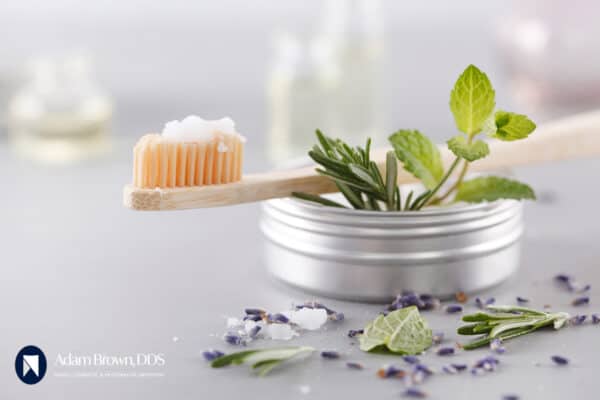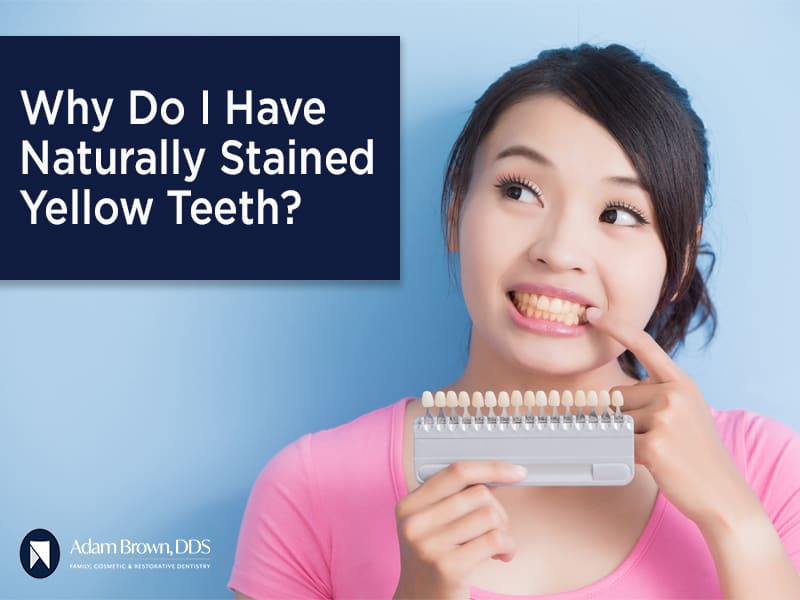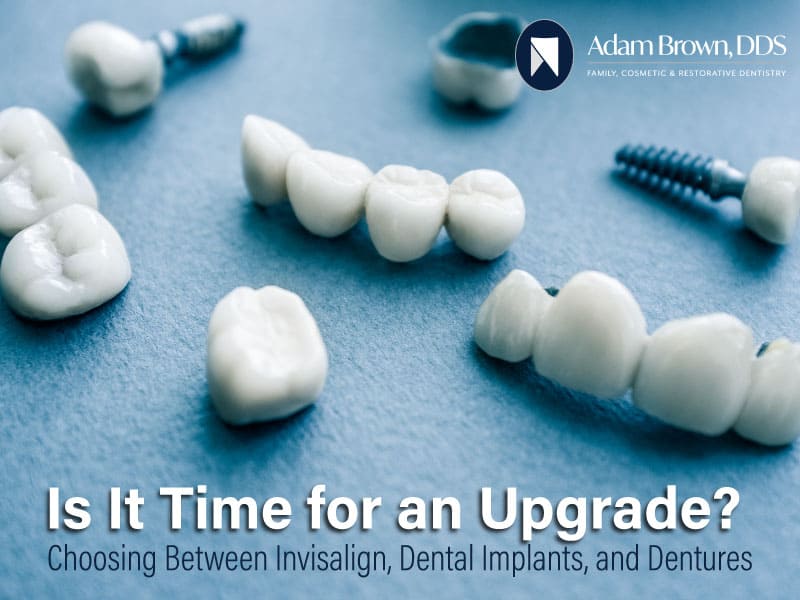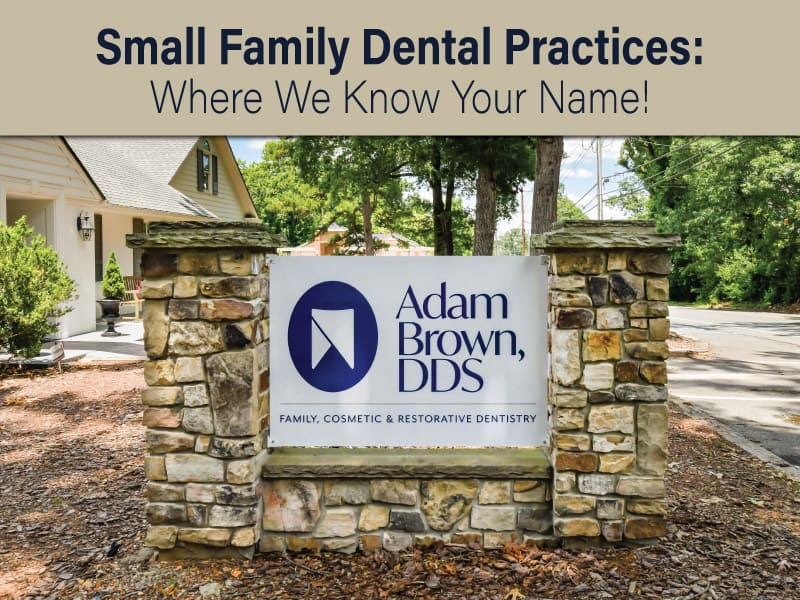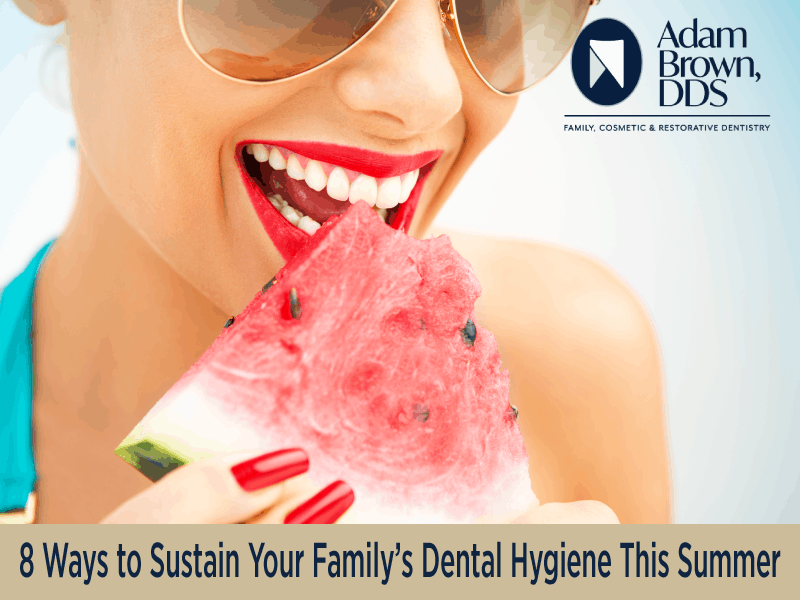Beyond the Smile: Exploring the Parallel Training of Dentists and Doctors
Dentists might not be the first to pop into your head when you think of medical professionals. But did you know that their training journey is quite similar to doctors’, especially in their early years of study? Their expertise is not just about teeth and gums.

Dentists roll up their sleeves and tackle many subjects that are key to understanding the human body inside and out. It’s like they’re the detectives of the body, investigating everything from bones to blood vessels to keep our smiles shining and our health in check. Adam Brown, DDS explains more about dentists’ training and capabilities while highlighting the importance of keeping tabs on your oral and overall health:
What Are the DDS and MD Parallels?
In medical school, dentists and doctors undergo rigorous training in foundational sciences, clinical diagnosis, and patient care. Here are a few areas where their expertise overlaps:
Anatomy: Peeling Back the Layers
Dentists aren’t merely focused on teeth; they’re exploring the intricate complexities of the entire head and neck region. Their expertise spans from understanding the skeletal structure to the intricate network of muscles and the pathways of nerves buzzing throughout. This profound understanding equips them to perform precise dental procedures and identify underlying issues that could impact our oral and overall health.
Physiology: Getting to the Heart of It
Physiology grants us a backstage pass to unraveling the inner workings of our bodies. Dentists meticulously study everything from digestion to the rhythmic pulsation of blood through our veins.
Why is this knowledge crucial for dentists? Comprehending how systemic conditions like diabetes or cardiovascular issues can influence dental treatments is paramount. It means connecting the dots between the entirety of our body and the health of our pearly whites.
Microbiology: The Tiny Troublemakers
Within our mouths exists a vast microcosm teeming with bacteria, viruses, and fungi carrying out their microscopic missions. Dentists plunge into this minuscule realm, acquainting themselves with the array of microorganisms capable of causing havoc or maintaining oral harmony. Empowered with this understanding, they champion the cause of good oral hygiene and deploy targeted interventions to combat pesky infections like gum disease or thrush.
Biochemistry: Breaking It Down
Have you ever wondered about the molecular composition of your teeth and gums? Dentists hold the answers. They meticulously scrutinize the elemental constituents of life—ranging from proteins to carbohydrates to lipids—and their roles in shaping our oral health. Such in-depth exploration helps them decipher the origins of dental maladies and tailor treatments to suit individual needs.
Putting It All Together: Science Meets Smiles
Dentistry transcends mere cavity repair; it’s a fusion of science and artistry dedicated to preserving our radiant smiles and overall well-being. Dentists like Adam Brown DDS harness their expertise in anatomy, physiology, microbiology, and biochemistry to deliver exemplary care. They’re the real MVPs of the dental realm, perpetually expanding their knowledge and devising innovative approaches to help our smiles endure the test of time.
The next time you find yourself reclining in the dentist’s chair, reflect on the dedication and intellect concealed behind that pristine white coat! Dentists aren’t just wizards of the tooth but masters of the entire oral cavity and beyond.
Dentists Take on an Expanded Role
Yes, dentists know a lot about teeth and gums, but they’re also pretty clued into patients’ overall health. Their training and experience enable them to see the connections between oral health and physical well-being. They know to spot signs that might hint at bigger health issues lurking beneath the surface.
Dentists undergo extensive schooling and training. They do more than fix cavities and perform cleanings; they also look for how oral health relates to overall wellness. They treat symptoms while digging deeper to determine what’s really going on and how it might affect overall wellness.
Your Mouth: A Window to Your Body
Believe it or not, your teeth and gums can spill the beans on what’s happening inside your body. Take gum disease, for example, which has been linked to serious conditions like diabetes and heart problems. Your dentist can decipher the clues and understand what they might mean for your all-around health.
Other mouth issues, like cavities and infections, can also hint at what’s happening in your body. Did you know there are connections between oral health and things like arthritis and respiratory infections? Tackling these dental problems head-on means that dentists can fix smiles while helping you stay healthier overall.
What Your Mouth Can Tell You About Your Health
Sometimes, mouth problems aren’t just about brushing habits—they could be linked to more significant health issues or medications. Dentists are trained to spot these connections—like how specific medications can cause dry mouth—and work with other healthcare professionals to manage overall and oral health.
And get this: Diseases like diabetes or HIV/AIDS can show up in your mouth too, causing weird lesions, changes in your gums, and other symptoms. Dentists know what to look for and how to team up with other doctors to give you the best care possible, no matter what’s going on with your health.
Early Detection and Referral
Ever wonder why your dentist does such a thorough check-up? It’s not just about your pearly whites—it’s about keeping an eye out for any signs that something bigger might be up. For instance, strange spots or discoloration in your mouth could be early warnings for cancer or autoimmune disorders. Dentists identify these signs early so that you can get the help you need.
Plus, dentists are all about prevention. They help you stay ahead of the game regarding your health by teaching you good oral hygiene habits and catching any issues early.
Routine Checkups Could Save More Than Your Smile
When it comes to staying healthy, we often rely on regular check-ins with our primary care doctors to catch potential issues before they become big problems. But dentists are unsung heroes in the healthcare game.
We usually think of them for cleanings and filling cavities. Still, those routine visits can provide a sneak peek into your overall health, sometimes even before your physician notices anything fishy. Let’s dive a bit deeper into how your trip to the dentist’s chair can be a game-changer for your health:
Spotting Sneaky Systemic Diseases
One of the cool things about regular dental checkups is that they can sometimes pick up on bigger health issues lurking beneath the surface. Things like diabetes, osteoporosis, and certain types of cancer can show early warning signs in your gums, tongue, and other mouth parts. For example, if your gums are inflamed and bleed easily, it could be an early heads-up about diabetes — or white patches in your mouth might signal oral cancer.
Heart Talk
Believe it or not, your dentist might even tell you about potential heart issues. There’s been some buzz in the research world about a link between gum disease and heart disease. The bacteria hanging out in your gums can sneak into your bloodstream and team up with other troublemakers to clog up your arteries, potentially leading to heart attacks and strokes. So, keeping your gums healthy could be a sneaky way to keep your ticker in tip-top shape.
Nailing Nutritional Needs
Your dentist isn’t just on the lookout for cavities – they’re also keeping an eye out for signs of nutritional deficiencies. Anemia and vitamin shortages often leave clues in your mouth (e.g., pale or swollen gums, funky mouth sores, weird changes in your tongue texture). Catching these signs early can help you get the proper treatment and avoid more serious health issues down the road.
Talk the Talk
To really make the most of your dental checkups as a health check-in, it’s essential to chat openly with your dentist about what’s going on with your body. Share any meds you’re taking, health stuff you’re dealing with, or any weird symptoms you’ve noticed lately. The more they know, the better they can suss out any potential health hiccups.
When penciling in a dental cleaning, remember it’s not just about keeping those pearly whites sparkling but also about monitoring your overall health. Your dentist could be the first to spot a health problem you didn’t even know you had. Talk about a win for team health!
Keeping Your Smile Through Tough Times
Your smile is your signature, but sometimes, life throws curveballs that can mess with your dental health. Whether you’re riding the rollercoaster of rapid weight changes or battling something as serious as cancer or diabetes, your teeth might take a hit. Some illnesses can play havoc with your pearly whites, but there are ways to keep them shining bright.
Rapid Weight Gain or Loss: Ever noticed how your teeth can suffer when your weight is on a wild ride? Crash diets, binge eating, or a hormonal rollercoaster can mess with your enamel, leading to cavities and gum issues. If you lose weight too fast, you might end up short on essential nutrients that your teeth love (like calcium and vitamin D). But gaining too quickly invites tooth decay to the party, especially if your new diet is heavy on sugar or acidity.
Cancer: Cancer knows how to throw punches at your oral health. Chemotherapy and radiation? They can sucker-punch your saliva glands, leaving you with a dry mouth that’s perfect for cavities and gum troubles. And don’t get us started on the meds that mess with your taste buds or leave you with mouth sores. Regular dental visits and some extra TLC for your teeth can help you go the distance.
Diabetes: Diabetes isn’t just about keeping tabs on your blood sugar; it’s also got its eyes on your teeth. High blood sugar weakens your immune system, so you’re an easy target for gum infections and periodontal disease. Gum issues can make it even harder to control your blood sugar, setting up a real tag-team match. But don’t throw in the towel! Keep up with those dental check-ups, manage your blood sugar like a boss, and brush and floss as if your smile depends on it.
Drug or Alcohol Abuse: Substance abuse is rough on your body and your teeth. Meth and cocaine are like wrecking balls for your dental health and can leave you with “meth mouth” or worse. While damaging your liver; alcohol dries out your mouth, piles on the plaque, and says “cheers” to oral cancer. But there’s always hope. Seek help for substance abuse, show your teeth some extra love, and you might just win this round.
Flu: The flu might seem like a temporary nuisance, but it can leave a lasting mark on your smile. Dehydration, fever, and a weakened immune system are all open invitations for oral infections like thrush and gum disease. Also, flu meds are like candy for cavity-causing bacteria. So stay hydrated, keep up with your oral hygiene, and don’t hesitate to contact Adam Brown, DDS if your smile needs some backup.
Final Thoughts
The extensive training dentists undergo mirrors that of medical professionals for the initial two years of med school. Dentists possess a comprehensive understanding of oral health intricacies and are proficient in anatomy, physiology, microbiology, and biochemistry. While their focus may primarily be dental care, their awareness of broader health implications is invaluable.
Recognizing the pivotal role dentists play in overall well-being emphasizes the importance of their profession in the broader healthcare landscape. Contact Adam Brown, DDS to schedule a dental checkup today — it’s a proactive approach to achieving optimal oral health and identifying potential underlying health concerns.


